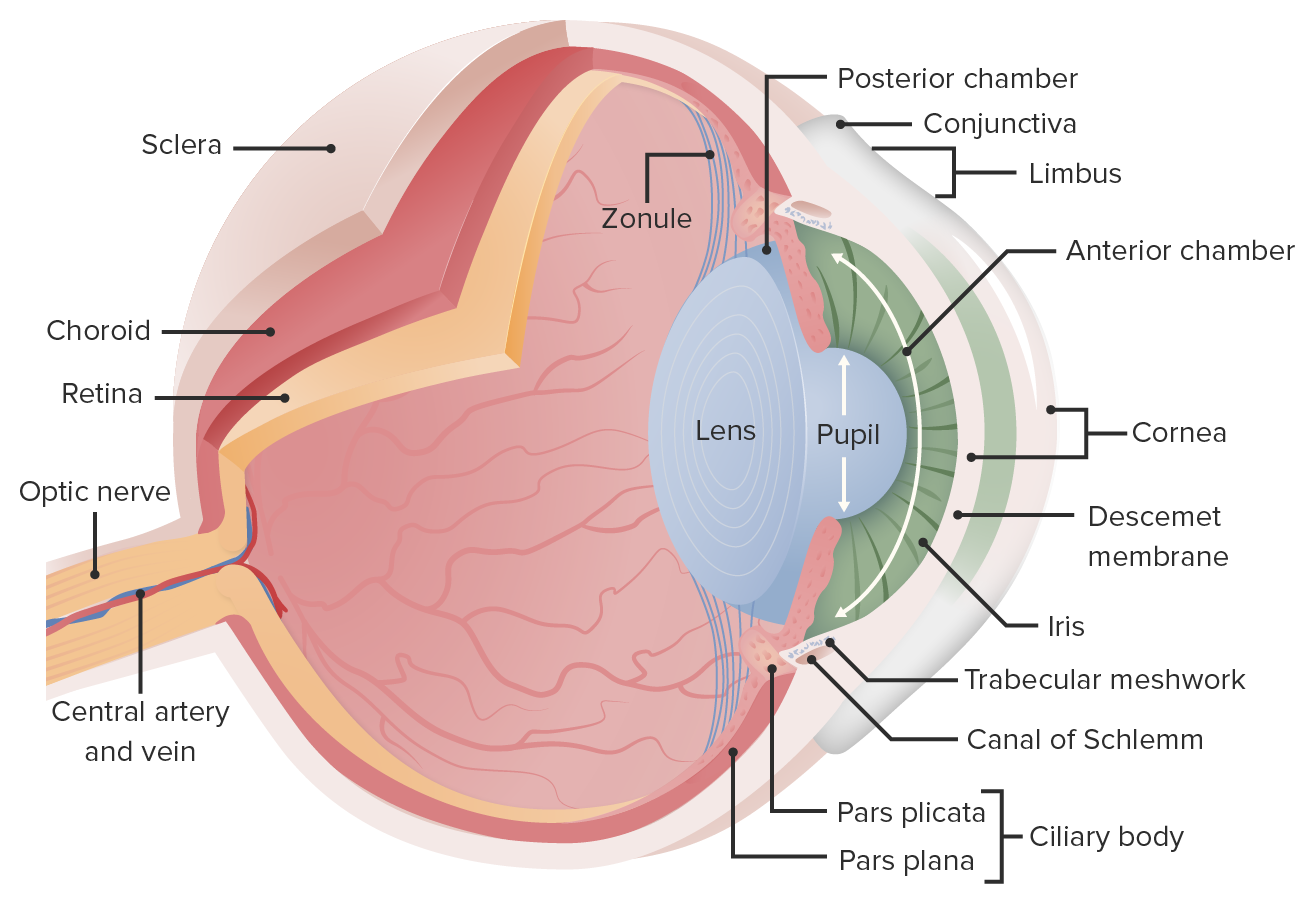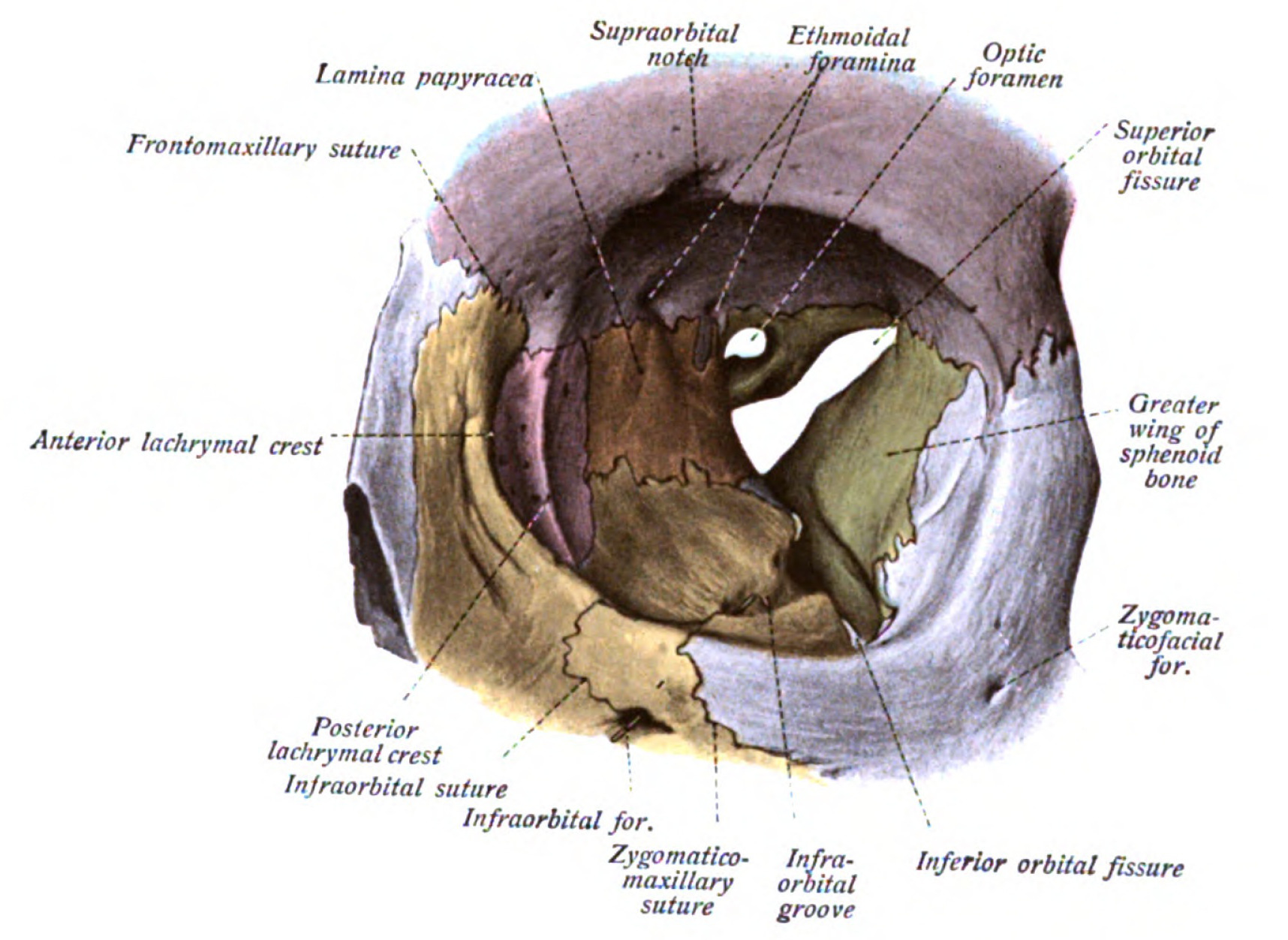Playlist
Show Playlist
Hide Playlist
Functions of the Extraocular Muscles – Orbital Muscles and Innervation
-
Slides 22 OrbitalMusclesInnervation HeadNeckAnatomy.pdf
-
Download Lecture Overview
00:01 This slide depicts the functions of the extraocular muscles as viewed by the right eyeball. So we need to quickly orient you to the lateral and medial aspects of the eye that we see right in through here. This will be the medial aspect of the right eye. This will be the lateral aspect of the right eye. So now, let’s look at the functions of the muscles that attach to the eyeball. First, we’re going to look at muscles elevating and moving the eye in or out. First up is the inferior oblique. 00:51 This will move the eye up and out or laterally. Next is the superior rectus depicted here. 01:04 It will also move the eyeball up but it’s going to move the eyeball in or medially. 01:13 Next, we have two muscles that depress and move the eyeball out or in. First up is the superior oblique. The superior oblique will move the eye down or depress it and will move the eye outwards or laterally. Next, we have the inferior rectus. 01:37 It too will depress or move the eye downwards but it will move the eye medially or inward. This slide represents two muscles, one of which will adduct the eyeball and the other will abduct the eyeball. First up out of this pair will be the medial rectus. As we can see here, the eye has been moved inward medially or adducted, so all three of those words describe the same movement. The other muscle is the lateral rectus. This muscle movement is shown here. In this case, the eyeball has been moved laterally and this is termed abduction. This is an MRI of the orbit. In this particular section, axial section, we can identify very clearly two recti muscles. Here’s the nose. Here is the right eyeball. Again, the left side of an MRI scan will be the patient’s right side. So the right eyeball was shown here. 02:56 This would be the medial rectus on the medial side of the orbit. Then over on the lateral side, we can see the lateral rectus. That concludes our presentation. 03:11 At last, let's have a closer look on the clinical correlations of the different eye nerves. 03:17 There could be an oculomotor nerve palsy, a trochlear nerve palsy, or an abducens nerve palsy. 03:24 Causes of an oculomotor motor nerve palsy can be an infarction of the midbrain, a berry aneurysm at the junction of the posterior communicating artery, and the internal carotid artery, as well as lesions of the cavernous sinuses, such as a neoplasm, an inflammatory, or a vascular lesion. 03:43 Eye-involving symptoms of this palsy is a horizontal temporal deviation, a down and out gaze, ptosis, or a pupillary dilation. 03:54 Causes of trochlear nerve palsy can be a head trauma, a tumor of skull base, a microvasculopathy, or this palsy can be idiopathic. 04:05 And eye that is up and in is a classic symptom. 04:08 Switching to the abducens nerve palsy, the two common causes are a postviral syndrome and an ischemic mononeuropathy. 04:17 With this palsy, the involved eye is directed medially.
About the Lecture
The lecture Functions of the Extraocular Muscles – Orbital Muscles and Innervation by Craig Canby, PhD is from the course Head and Neck Anatomy with Dr. Canby.
Included Quiz Questions
Which action would a person NOT be able to perform if they lost function of the lateral rectus muscle?
- Abduct the eye
- Look medially and downward
- Look downward and laterally
- Look upward and laterally
- Adduct the eye
Which of the following muscles moves the eye superiorly and laterally?
- Inferior oblique
- Superior oblique
- Levator palpebrae
- Lateral rectus
- Superior rectus
Which of the following muscles move the eye downward?
- Superior oblique and inferior rectus
- Superior oblique and superior rectus
- Inferior rectus and inferior oblique
- Medial and lateral rectus
- Inferior oblique and superior rectus
Customer reviews
3,6 of 5 stars
| 5 Stars |
|
5 |
| 4 Stars |
|
2 |
| 3 Stars |
|
0 |
| 2 Stars |
|
0 |
| 1 Star |
|
3 |
well explained. its concise and not overcomplicated. has everything you need and is well taught
great explanation and quiz is the best part of the lectures
It was really helpful, I would recommend this as an auxilary tool to follow up with your text books and class notes.
Me gusto todo, simplemente que en la pregunta que dice cuales son los músculos que desvían el ojo hacia abajo me dio como incorrecta cuando puse que eran el oblícuo sup y el recto inferior.





